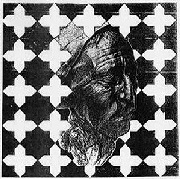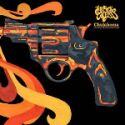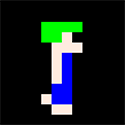|
Ah! Thank you, I remembered the boss relic choices wrong and totally forgot about the Stone you ended up picking. Maybe the Sacred Bark was available at the second act boss? (or I mixed up runs because I tried like four times today) Next time I have some spare time for the game, I'm going to see if I can follow your description well enough to replicate the outcome!
|
|
|
|

|
| # ? Jun 9, 2024 14:58 |
|
Did the Spire with Friends mod again, tonight. That's always a fun time if you've got a friend who played. The first game, when we had kinda forgotten the rules is always kind of a slog, but our second run we knew just what we were doing and sailed to an A8 heartkill Pro tip: Don't play as the same character to maximize fun interactions. He shipped me echo form to send my apparitions into the stratosphere, and I sent him after image to give him the block boost while he set up his orbs.
|
|
|
|
I just cast a barrage while having a full orb loadout on a thorns enemy
|
|
|
|
I have done this and it is utter pain I hate how it happens like that against a thorns enemy but not the defense curl boss
|
|
|
|
Managed to beat Slay the Spire A20 for the first time yesterday. Ironclad, scaling was 2x Spot Weakness+1 + Limit Break, blocking was 2x Disarms+1, 3x Shrugs, Flame Barrier+1, Clothesline + Barricade+1, frontloaded dam via Whirlwind & Bash+1 + Necronomicon/Double Tap. Energy mainly from Bloodletting+1 & Cursed key after Act 2 since I had the blue key already. Other notable relics Bag of Prep/Gambling Chip (love this combo), Pyramid & Helix. No Health/Healing apart from the starter relic but keeping a Fairy bottle all the way to the end helped survive the Heart fight. The only really bad move I made was taking a Perfected Strike+1 in Act 2 since I had 6 strike type cards in my deck and the damage looked so juicy, but with 3x 2 cost attack cards/Whirlwind for AOE and Necronomicon/Double Tap at this point it was an entirely unnecessary pick. I was lucky to draw well in the Act 4 elite so I could nuke the floor in round 2 with a 3x6 energy 4 strength Whirlwind, that could have gone a lot more poorly with this little card draw and too much strike junk in my deck. e: decided to have a look at the history again to post it. I totally forgot about the Blood Idol, which almost always gives significant sustainability during a run, and Orrery which I love to pick for its relative cheap ability to round out and even transform a mediocre/early deck, picking 5 from 15 cards for ~150 gold is a pretty huge deal in this game and a couple relics like the eggs, bowl or fish makes it even stronger. I suppose Strawberry gave at least a little extra health to even out the Idol event's health loss. 
Grab Im Moor fucked around with this message at 13:59 on Apr 18, 2022 |
|
|
Finally scored a Heart kill on Hermit after multiple attempts. This deck was pretty fun. Nearly everything in this deck exhausts or generated curses. Two Fatal Desires for +4 draw and generating 2 curses/turn, Shadow Cloak to give me block for drawing curses, and Virtue to scrub my debuffs to stay at full power. Then the finishing touch was the Reprieve to wipe my deck clean and potentially trigger a free turn, along with From Beyond to dump 100+ damage from all my exhausted cards. My 3 Lone Wolves went onto Roughhouse and whatever 2 other cards I found most suitable. I was pretty sure I could manage an infinite with this deck (especially with that Sundial) but never found the right combination. I also won a couple fights from triggering the Dead-On damage on Impending Doom from Midnight. I notice they've been continually updating Hermit to sand off the rough edges. Maintenance now is a straight-up Strike buff and the upgraded version gives you +1 Dexterity on top of that. Called Shot is now baseline 0-cost. Body Armor doesn't generate a Defend anymore, but prompts you to discard and gives you extra block if the card was a Skill. I'm really enjoying the new character. Hermit's core mechanic, Dead On, is really interesting since there's so many ways to trigger it and to play around it (playing cards, drawing cards, discarding, generating cards, or retaining cards), but it's not required. So if you draft in a different direction you can just ignore it, unlike Watcher's stances or Defect's orbs where ignoring it is usually going to make your playthrough unnecessarily difficult, and because of that there's kind of a gravity well around the mechanic where your drafts will converge towards one of a few ways to achieve your win condition.
|
|
|
|
|
Dead on is such a great mechanic
|
|
|
|
ASAPRockySituation posted:I have done this and it is utter pain The worst part is that I always forget how thorns work, since there's 2 different types, so I could kill the Guardian faster if I use a multi-hit attack, but I think it will kill me so I drag out the fight longer. Is there any explanation why there are 2 different thorns buffs?
|
|
|
|
A Moose posted:The worst part is that I always forget how thorns work, since there's 2 different types, so I could kill the Guardian faster if I use a multi-hit attack, but I think it will kill me so I drag out the fight longer. Is there any explanation why there are 2 different thorns buffs? Probably because a lot of basic attack cards are multihits and it would really suck if one of the Act 1 bosses hard countered a large swath of early offense staples.
|
|
|
|
Man, slime boss is on a whole other tier. Definitely the hardest boss for Silent at least. Can't use poison since it clears stacks when it splits, and you have to have crazy burst to get it to split into like, 2 30hp slimes, because if you split it at 50-60, you will not win a long drawn out fight against 2 big slimes while half your deck is half status cards and they hit for 30 something damage. Meanwhile, you can make an Ironclad deck that likes the slimes, or you can set up for some nasty burst really easily. And watcher can just kill the boss before it splits. Defect has better burst too, but for silent you're not getting huge burst damage like that unless you get a Catalyst+ in act 1 or a bunch of shivs and Finisher or something.
|
|
|
|
 Found an infinite block combo I've never seen before... just need to play Necronomicurse 500 times
|
|
|
|
A Moose posted:Man, slime boss is on a whole other tier. Definitely the hardest boss for Silent at least. Can't use poison since it clears stacks when it splits, and you have to have crazy burst to get it to split into like, 2 30hp slimes, because if you split it at 50-60, you will not win a long drawn out fight against 2 big slimes while half your deck is half status cards and they hit for 30 something damage. Meanwhile, you can make an Ironclad deck that likes the slimes, or you can set up for some nasty burst really easily. And watcher can just kill the boss before it splits. Defect has better burst too, but for silent you're not getting huge burst damage like that unless you get a Catalyst+ in act 1 or a bunch of shivs and Finisher or something. If I happen to get a Silent Slimeboss Act1 I'm usually trying to save/buy at least one good potion for it. Strength/Flex for damage, Shiv/Flame potion to eke out a better split, some kind of block/healing to tank the first Slime crush and stack more damage, etc. Not too long ago I bought and upgraded a Hand of Greed specifically for this reason since besides the gold gain it's also a very good damage card early on and I had a vulnerable potion. Prioritising damage/some source of AOE over block is usually how I deal with this act, if the slimes split they can't hurt you.
|
|
|
Eternal Form stacks.
|
|
|
|
|
Thanks again to all the people who pointed out stuff I was doing wrong last time! After a few more tries I managed to get my first heart kill with the defect! The relics probably carried me a bit (especially the incense burner, which proced once on the heart's big shot), but still this was clearly a lot more effective than last time. With enough focus and frost, you're pretty well invincible no matter what you draw! The Aggregate and Double Energy popped in from the Astrolabe, so whatever. Not really on-theme but I used them occasionally when I drew them with an X card, or if I had a hand with a decent amount of draw. They came in handy here and there. The big pile of Claw actually worked out reasonably well, dealing 25 damage apiece by the time I got through Donu and Deca. Would have liked more Claws instead of some of those Go For The Eyes but eh, free damage that comes back when All For One hits, and it kept most enemies permanently weakened. The only big weakness I encountered with the Heart was the limited amount of block not from orbs meant that I suffered a fair amount from the beat of death. Akratic Method fucked around with this message at 05:40 on Apr 21, 2022 |
|
|
|
Nice job. 4 defrags/capacitor/Echo and decent frost density/Blizzard+ was probably enough for a win condition already that you didn't need the claws/eyes/AfO on top of that but I don't know how the deck building played out over the course of the run. Just know that 0 cost cards can be a trap as they are not actually free, unless there is some kind of draw attached to it that plays out to your deck's benefit they often slow down your ability to get the powerful stuff (like frost/echo/defrag) online sooner and scaling more often. I'd take some kind of card draw like Seek, Skim, Hologram, more Coolheaded etc over those claws/eyes, so that the probably mediocre at best Blizzard here would turn into a flashy and unreasonably loud 50-100+ AOE dam for 1 energy, which is very fun when that happens, especially doubled in echo form. Not that the claw stuff was wrong to play with, with this much passive block you might as well could have focused on that and maybe get a Hologram or two instead of the Blizzard or w/e if possible to help scale them as often as possible. Static Discharge, Multi Cast, Tempest, Sunder+ was probably just dead weight for the most part I guess? Re: beat of death, Loop in a good frost deck works extremely well in the heart fight to block that during your turn. It's generally a strong power card in the later half of the run, not so much early on. In higher ascensions you need more focus and movability in your deck so it doesn't kill you in awkward draws, especially with a 40+ size, in lower ascensions you have more leeway to branch out your deck into different strategies and care less about card draw like that is what I wanted to say from my experience.
|
|
|
|
I've had a really crushing loss streak with Watcher. I think it's because I'm trying to force Merl's purple 11 card deck or whatever. I'm going to back to the decks with heaps of cards and good rares/uncommons like TTH etc. thank you for reading my livejournal
|
|
|
|
Clugg posted:I've had a really crushing loss streak with Watcher. I think it's because I'm trying to force Merl's purple 11 card deck or whatever. I'm going to back to the decks with heaps of cards and good rares/uncommons like TTH etc. thank you for reading my livejournal Same! I just had back to back heartkills with a14 silent and A20 ironclad, but I haven't gotten out of act 2 with watcher since Merle had their streak
|
|
|
|
Just had a really fun Silent run with a full Girya, Bag of Preparation, Ninja Scroll, Wrist Blade, Akabeko and an absurd three backstabs. I melted a +HP burning slavers fight on turn one, which felt amazing. In Act 3 I added a hilarious Metamorphosis+ to the deck, which created things like zero cost +7 Riddle With Holes, Eviscerates and Flechettes. The deck was a giant mess, so I would have been clowned if I went to Act 4 but I was happy to just dunk Awakened One and bow out. e. By "dunk Awakened One" I mean "barely eke out a win with 2 HP left because I didn't bother to develop a block strategy" Old Dun Cow fucked around with this message at 12:32 on Apr 23, 2022 |
|
|
|
My usual block strategy with silent is after image + shivs. I tend to like to play aggressive decks.
|
|
|
|
Just had my favorite run of all time (2,000 hours played) Watcher. Ascension 20. Took the two removals for reduced max hp. Got removals in 3 of my first five floors. Floor 5 and I'm sitting on a deck that's just vigilance, eruption, two strikes, a defend, and the curse. I don't pick up any cards in this act, I'm holding off for the rushdown/cheap calm infinite combo. Act 2 I add three Apparitions to buy me time. I'm now at 28 max hp. I keep steering into shops hoping to hit one of the two powers I want (rushdown, mental fort). I dont, but I buy to potions to raise my max hp 10. I finally grab an empty mind to kind of even things out. Finally, towards the end of Act 2 I get an upgraded inner peace. I'm now almost infinite damage. I get a rushdown and plow through the collector with an almost infinite damage combo. Act 3 I'm just focused on destroying elites, grabbing keys, and trying to get mental fortress. I grab a second rushdown making my deck officially infinite damage. With five floors left I still have no answer to beat of death. I hit a shop. No mental fort, so I start thinkkng: I need another way. There is a nirvana, so I think hard and realize if I grab a just lucky and upgrade it I should go infinite, provided nirvana hits on scrying an empty deck(I think it does). I also grab a prayer wheel. Next floor is an elite. Nothing good in card rewards. Finally a hallway fight. My reward choices: Choice 1: Crush joints, prostrate, empty fist Choice 2: prostrate, deceive reality, like water Slowly I look over each card, trying to figure out if it puts me over the beat of death. Sadly, none work. The prostrate almost gets me there, but prostrate plus inner peach plus eruption still gets me minus two damage. Then I realize I can choose two prostrates. But even drawing and playing those nets me a total of zero block, which probably won't be enough to survive the heart's attacks. I shrug and grab the two prostrates and head into the bosses. Turned out to be decaf donut and awakened one, so I got lucky there. While whittling them down I start to play around trying to figure out my heart game and then I see it: Prostrate plus prostrate plus eruption plus... vigilance. Every 3rd cycle I gain three energy from divinity after losing only two from vigilance eruption. And I'm gaining tons of block It worked, netting me only my second ever heart kill with watcher, and the first ever heart kill with any character where I knew exactly what I needed for the victory the entire game (except for the double prostrate pivot) My final deck: Ascenders bane 2x prostrate+ 2x vault+ Eruption+ Empty mind+ 2x rushdown+ Inner peace+ Vigilance+ 2x Apparition+ Apparition Strike+ Yay! I love this game!
|
|
|
|
Just got into this game and I am hooked. Trying to beat the heart on Silent though and itís wrecking me (Iíve only gotten there a couple of times though). I am playing on A1. I made an incredible shiv deck that would cycle about 25 cards per turn and my shivs hit for 50-70 each when fully powered up. Lots of intangible and block too - wasnít neglecting it. But ďbeat of deathĒ utterly destroyed me as there was literally nothing I could do. My whole concept was card cycling insane amounts each turn to do damage. I got up to the heart without losing any health at all on floors 3 and 4 and then just fell over. Are shiv decks generally a no-go on the heart? The card cycling seems bad. I feel like poison would be easier. Obviously skilled players can do anything with anything but for a newbie I should focus poison?
|
|
|
|
Hyzenth1ay posted:Just got into this game and I am hooked. Trying to beat the heart on Silent though and itís wrecking me (Iíve only gotten there a couple of times though). I am playing on A1. you can absolutely beat the heart with shivs, you just need a block engine online before you start clicking blade dances. that can be after image (especially in multiples or with nightmare), or footworks + good block cards, or wacky stuff like upgraded calculated gamble + tough bandages. if youíre demolishing act 3, then you can take more aggressive paths (more elites and combats) to find cards/relics that will make your deck not just generically stronger but able to solve the problems specific to the heart.
|
|
|
|
Hyzenth1ay posted:Just got into this game and I am hooked. Trying to beat the heart on Silent though and itís wrecking me (Iíve only gotten there a couple of times though). I am playing on A1. Can you post the seed and your Neow gift? I love answering these questions by working through lower seeds with my sons
|
|
|
|
Got a new personal best for A20 heart streak: 4 in a row, one of each character.     Then I smithed when I should've rested and lost to +str Lagavulin like a moron  Still, my previous best "streak" was 2, so I'm proud of getting four wins in a row.
|
|
|
|
DontMockMySmock posted:Got a new personal best for A20 heart streak: 4 in a row, one of each character. Nice! I like the double Omniscience, double Fasting watcher deck.
|
|
|
|
jetz0r posted:Nice! Oh yeah, you can do gross things with Fasting when you've got a deva form and a plethora of energy relics. And bird-faced urn and mummified hand were incentivizing me to take more powers anyway.
|
|
|
Scored another Heart kill on Hermit as I climb ascensions. Full gunslinger build here, no black magic and even only 3 rare cards, just rack up damage boosts via Determination/Deadeye/Smoking Barrel while dropping 60-90+ damage Headshots. I think I scored like easily ~200 gold from Dead Or Alive bounties on that run.
|
|
|
|
|
Probably a dumb question, but I donít suppose thereís any way I can sync my progress across Steam and iOS versions of the game, is there?
|
|
|
|
After about 10 failed attempts, I finally beat Act 3 with the Defect. And I'm still not sure I fully comprehend how to effectively use the cards. I ended up with what felt like a hodgepodge of different abilities and powers that all miraculously worked together to carry me through the final act and boss (donut boss, also defeated for the first time). Getting an early upgraded Apotheosis really helped, as well as almost always drawing Electrodynamics early on along with a lot of energy generating cards/relics. Throw in two upgraded Buffer's and I didn't have to worry about block any longer while I could fill my orbs with lightning and dark and then evoke them over and over again until the enemies just melted in front of me. Now my goal is to finish unlocking all the stuff from the rest of the characters (I failed so many times as Defect, I unlocked everything on it first - I still have 2-3 unlocks left with Ironclad/Silent/Watcher). Then on to attempting to get to the Heart. I'm glad I can give the Defect a break. All those orbs and math was wearing on my brain. My partner is sick of me playing this game. I can't stop.
|
|
|
|
This game is so good. Like god drat. It's been years, I'm still bad, but I'm becoming slightly less bad and I keep doing New Things. Slay the Spire has usurped FTL as my favourite game.
|
|
|
|
I really appreciate this thread's willingness to help new players. I've gotten a lot of good advice here, both from responses to my own posts and from other people's conversations, and I thought it might be useful to compile some of the common advice to beginners for easy reference. So I did. Here you go: === A BEGINNER'S GUIDE TO SLAY THE SPIRE === This is an overview of the most important things to think about when playing Slay the Spire, intended to help players go from "I'm dying all the time" to "I'm dying most of the time". It is not a guide to any sort of high-level play. All advice in this guide is of a general nature, and exceptions can be found to basically every suggestion here. CHOOSING YOUR PATH A complete run of Slay the Spire consists of three acts, each ending with a boss. When planning your path through an act, it's important to consider the possible upsides and downsides of each node. There are seven different kinds of nodes: Battles reward you with some gold, a choice between three cards and possibly a potion. While gold and potions are both useful, the card is the most important reward. Getting cards from battles is the main way of improving your deck, especially early in a run. You should expect to lose a small amount of HP in a battle. Battles are selected randomly from a fairly large pool specific to the current act. The first three battles of act 1 are selected from a separate pool with somewhat easier combinations of enemies. The same applies to acts 2 and 3, but only for the first two battles. Elite battles give you the same rewards as ordinary battles, plus a relic. Relics can be quite powerful, so you'll want to fight at least some elites along your way. Each act has only three possible elite battles, and figuring out what you need to survive them is an important part of deck construction. You should expect to lose a substantial amount of HP in an elite battle. Elites are chosen randomly, but you'll never fight the same elite twice in a row. For example, if your first elite battle in act 1 was Sentries, the next one will be either Lagavulin or Gremlin Nob. The third elite battle can be a repeat, however: if your first two elite battles were Sentries and Lagavulin, the third will be either Sentries or Gremlin Nob. (Note however that the Dead Adventurer event in act 1 is completely separate from this system. It can pick any of the three elites regardless of what your previous elite battle was, and it does not affect what your next elite battle can be.) Campfires let you upgrade a card or rest to recover HP. Upgrading a card will make your deck stronger for the rest of the run, but don't underestimate the value of resting. Having upgraded cards won't help you if your HP is too low to survive battles, and many cards function quite well without being upgraded. Your choice here depends heavily on your deck composition; some decks basically require you to rest at every campfire in order to survive, while others let you go through battles without losing any HP at all. Consider how much HP you have been losing to battles, and how far it is to the next campfire, when deciding whether to rest. Consider also whether you have cards that absolutely need to be upgraded in order for your deck to function properly; if you do, you might take the risk of upgrading even with low HP. The last node before a boss will always be a campfire, regardless of your path. Shops offer a selection of seven cards, three relics, three potions, and the option of removing a card from your deck, all of which cost gold. You should plan to visit a shop a few times during a run, as the wide variety of options means that you'll usually find something that improves your deck or helps to fix problems you've noticed during battles. Make sure that you actually have some gold when you reach the shop, though. A reasonable goal is to have at least 150 gold when reaching a shop. The most expensive items in the shop, rare relics, cost around 300 gold. Treasure rooms hold a treasure chest containing some gold and a relic, both of which you should take. There will always be a treasure room halfway through each act, regardless of your path, and there won't be any others. The treasure chest can have three different appearances, which partially indicate the rarity of the relic inside. You will never need to know this. Question marks can be a battle, a shop, a treasure room, or an event. They cannot be elite battles or campfires. Events are mostly benign, with many offering a small improvement for free or a tradeoff between a positive and a negative effect. However, some events have unavoidable negative effects, especially in acts 2 and 3. It's usually worth going to some question mark nodes to see what they offer you, but the pool of events is large enough that you cannot hope to get one specific event by picking as many question mark nodes as possible. Boss battles are found at the end of each act. The boss battles in acts 1 and 2 give you the same rewards as an ordinary battle, except that the three cards you choose from are guaranteed to be rare. They also reward you with a choice between three boss relics, which are often very powerful. You should always take one of these boss relics. The boss battle in act 3 is the final challenge of the run; winning it ends your run with victory. Each act has three possible bosses, and all bosses have their own icon on the map. This means that you know which boss you'll be facing as soon as you enter an act. This can be relevant for deck construction; for example, if you know you'll be facing a boss with minions, attacks that hit all enemies at once become more useful. When deciding where to go, you should consider whether you need more cards for your deck. If you do, you want to go through some battles to get cards. At the start of a run, this should be your first priority. It can be good to pick a route with a few question mark rooms among the battles, as these will often improve your situation. Later in a run, when your deck is good enough that you feel ready to fight the boss of act 3, you may instead prefer a route with few battles in order to preserve your HP for the boss. Consider also whether you can handle elites with your current deck; if you can, you should pick a route with an elite battle as the relic it provides can be very valuable. You should however be careful not to commit to long sequences of battles without any campfires in between. Be particularly wary of paths with multiple elite battles with no campfires between. Generally you should also prefer paths with multiple branches, to keep your options open. Nodes with one path that leads to an elite battle and one that leads to something else are particularly worth aiming for; when you reach the branching point you can pick the elite battle if you're ready for it, and the other path if your HP is too low or your deck still too weak. BUILDING YOUR DECK The ultimate goal of a run is to build a deck powerful enough that you can survive until the end of act 3 and defeat the boss there. To that end, there are three main priorities to remember when you construct your deck. First, you need damage. To win battles you need to be able to kill enemies, and the starter cards are not very good at that. Usually this means taking attack cards, but there are also some skills and powers whose main purpose is to deal damage. You also want some cards that deal damage to all enemies, as some multi-enemy battles are very difficult to handle otherwise. Second, you need survivability. Enemies gradually become more dangerous over the course of a run, so you need some way of dealing with that. Usually this means cards that generate block in one way or another, or cards that weaken enemy attacks in other ways. Third, you need scaling or consistency. Many late-game enemies, and all act 3 bosses, become more powerful over the course of the battle -- "scaling up", so to speak. To deal with that, you can look for your own scaling, cards that will make you more powerful over the course of a battle. This can be in the form of increased damage, so that you will be able to win more quickly, or increased block, so that you can survive for longer. Most power cards are a form of scaling, since they will provide you with permanent advantages once you play them. Alternatively, you can look for ways to make your deck more consistent, so that you will be able to play your most powerful cards more often. Cards that draw more cards can help with this, as can removing weak cards from your deck when you get the opportunity. This is not to suggest that your deckbuilding should go through three clearly separated phases of finding damage, then survivability, then scaling/consistency. If your first card reward has no damage cards but does have a good block card, then you should absolutely take the block card to help your survivability. But if you have a choice between multiple useful cards, you should generally follow this priority order. First focus on damage; once you have some damage, focus on survivability; once you have both damage and survivability, focus on scaling and consistency. When adding cards to your deck, there are three groups of cards you should look for: cards that work well with your other cards, cards that are generally useful, and cards that solve specific problems. This is not a prioritized list! Rather, when offered a card you should consider whether it fits into one of these three groups. If not, it's most likely not worth taking. Remember also that you are not required to add a card to your deck after winning a battle. Sometimes the best option is to not add a card at all, especially in the later parts of a run. The first group is somewhat obvious: once you have a gameplan other than just playing Strikes and Defends, you want cards that fit into that plan. For an overview of various synergies that can be useful, look at the section on classes further down. Remember, however, that you cannot afford to only pick cards that fit into a narrow plan. You only get a limited number of card choices, with no guarantee that any specific card will show up. Occasionally, you'll have a run where you just get every card you could want and end up with a highly efficient and synergistic deck, but this is rare. Most successful decks are somewhat cobbled together, with some cards that synergize with each other and some that just happened to be useful. Hence the second group: generally useful cards. For an example of this, consider Acrobatics, a card that lets you draw three cards for 1 energy but also forces you to discard a card from your hand immediately afterwards. There are various cards that provide you with small bonuses when you discard a card, making it possible to turn the drawback of Acrobatics into an advantage. But even if you have none of these cards, Acrobatics can still be worth taking. Drawing three cards helps you find the most important cards in your deck more quickly, and the drawback of needing to discard a card is actually quite small, since you usually won't have the energy to play all the cards in your hand anyway. Similarly, it can be worth taking other cards that provide you with significant advantages for their energy cost, even if they don't synergize with any of your other cards. In the early parts of a run many cards will fit into this group, since the starter deck is weak. Once you've built up a better deck, you can afford to be more selective. The third group, cards that solve specific problems, is a bit subtler. Since there are only three elites in each act, you are fairly likely to run into any given elite if you take two or more elite battles in an act. For example, consider the act 1 elite Sentries. They add Dazed status cards to your discard pile, so you'll draw a lot of Dazed cards once you've gone through your deck the first time. One way to deal with this is to add the card Fire Breathing, a power that deals 6 damage to all enemies every time you draw a status card, to your deck. With Fire Breathing in play, the Dazed cards provide you with free damage, making it much easier to kill the Sentries. Because of its usefulness against Sentries, Fire Breathing is worth taking in act 1 even though there are many battles where it does nothing at all. Similar considerations apply to other elites, as well as to the various bosses. Keep in mind which battles you expect to face soon and look for cards that will help with them, especially against enemies that your deck will otherwise have trouble handling. When offered a choice between relics, in shops or after a boss, the same three groups apply. You want relics that fit with your gameplan, are generally useful, or solve a specific problem. Among the boss relics there are several that provide you with an extra energy every turn, at the cost of some downside. For these, you want to consider whether your deck can handle that downside. For example, Velvet Choker prevents you from playing more than six cards in a single turn. If you have a deck that mostly plays cards costing 1 or 2 energy and that rarely generates extra energy, Velvet Choker is probably a good choice. But if you have a deck that can play many cards in a turn, either by playing cards that cost 0 or by generating more energy during your turn, Velvet Choker's downside is too restrictive. Consider what you can deal with, and choose accordingly. You also shouldn't be too focused on getting an extra energy every turn; the other boss relics are quite powerful as well. When upgrading cards in your deck, you should first check if you have any cards that absolutely need to be upgraded. Some cards change their behaviour significantly when upgraded, to the point where you might be planning to upgrade them from the moment you add them to your deck. An example of this is True Grit, which gives 7 block and exhausts a random card in your hand. When upgraded, it gives 9 block and lets you choose which card to exhaust instead. This makes True Grit+ much easier to use than True Grit, since there is no risk of exhausting a card you want to keep. There are several other cards that similarly need to be upgraded in order to be worthwhile. Consider also your general plan for battles. If you have a clear gameplan that relies on a specific combination of cards in your deck, upgrades that make this plan more consistent or easier to execute should be prioritized. Besides this, upgrades that reduce the cost of a card are generally useful, especially early in a run. Upgrades that reduce a card's cost from 1 energy to 0 are particularly good, since they guarantee that you will be able to play the card every time you draw it. Finally, look for cards whose upgrades are generally useful: significant increases in damage or block, additional card draw, and increased duration of debuffs are often worthwhile. Remember also to consider cards in the starter decks (other than Strikes and Defends) as possible upgrade choices; depending on what other cards you've picked up, a starter card may well be your best option for an upgrade. When removing cards from your deck, you want to get rid of the least useful cards. First of all, if you have any curses you should remove one of them. Otherwise, you'll most likely want to remove a Strike. Strikes are quite weak as attacks go, and therefore worth removing as soon as you have some better ways of dealing damage. If you haven't found much damage yet but you do have some cards that help your survivability, you'll want to remove a Defend instead. Occasionally you may also have some cards in your deck that are genuinely useless, most likely as a result of transforming a card. If so, you may want to remove those before starting on Strikes or Defends. Finally, a word about transforming cards. Transforming a card can feel offputting at first, because the randomness means that you might get something completely useless. That is true, but the risk is worth taking anyway. Early in a run, putting a random card into your deck is likely to be an improvement since the starter cards are weak. Moreover, even if the card you get is useless at the moment, you will sometimes be able to make it useful by adding cards that synergize with it from battle rewards or shops. For the same reason, the boss relics that transform cards can be quite powerful, despite the risks. When choosing which cards to transform, you should follow the same guidelines as for removing cards, except that you should never transform a curse. You will just get another curse back. WINNING YOUR BATTLES Battles in Slay the Spire are very varied, and an approach that works fine in one battle may fail completely in another. Nevertheless, there are a few general ideas worth making note of. First, plan out your entire turn. Consider not just which cards you want to play, but which combination of cards that will give you the best outcome for this turn. In connection with this, if you decide to play cards that draw more cards, you should generally play those cards first. There's no use in drawing a powerful card if you've already spent your energy on something else, and if the cards you draw are weak then the order in which you played your cards didn't matter anyway. Second, look for lethal damage. Killing all the enemies is the goal of each battle, so if you have enough attacks in hand to do that, you should. This also applies to individual enemies in multi-enemy battles, since killing an enemy prevents it from attacking. Sometimes it's better to play another attack or two in order to kill an enemy, instead of playing block cards. Third, keep track of your relics. Some relics provide recurring advantages in battle, and it can be very useful to remember when those advantages will come up. For example, Pen Nib causes every tenth attack you play to deal double damage. If Pen Nib's counter is showing 8 at the start of your turn, you know that the second attack you play that turn will be doubled. You therefore want to order your attacks so that the second attack you play is the most powerful one. For another example, Orichalcum provides you with 6 block at the end of your turn, but only if you don't have any other block. With Orichalcum there is no point in playing just one Defend on your turn, since you'll just end with 5 block instead of 6. So if you only have one Defend in hand and no other block cards, you should forego playing it and spend the energy on an additional attack instead. Fourth, use your potions. There is no reward for holding potions when you die, so you should use them to help you win battles. A good rule of thumb is to always use a potion in elite and boss battles; keep this in mind and look for opportunities to make good use of one of the potions you have during the battle. Don't be afraid to use potions during regular battles, though. Sometimes, you really just need some extra help to deal with enemies that your deck has trouble handling. The best time to use a potion depends on the type of potion you have. Potions that give permanent buffs, such as dexterity, should be used right at the start of the battle. This also applies to power potions, since most power cards provide a permanent advantage. Potions that provide a temporary advantage should be used on a turn when that advantage will improve your situation significantly, generally at the start of the turn. Thus potions that provide temporary strength should be used on a turn when you intend to play many attacks, potions that provide energy should be used on a turn when you have many expensive cards you want to play, and so on. If you remember to look for opportunities, you'll usually find them. Fifth, consider when to play your exhaust cards. Since exhaust cards can only be played once, the timing of that play can make a large difference in the value you get from the cards. For example, consider the card Shockwave, which applies 3 weak and 3 vulnerable to all enemies. It can be played as soon as you draw it, and will provide an immediate, significant benefit. However, some bosses have a second phase in which they first remove all their debuffs and then use more powerful attacks for the rest of the battle. Against these bosses, it can be useful to hold Shockwave back until the second phase has begun. Making the boss weak will reduce the damage of its new, more powerful attacks, and making it vulnerable lets you deal more damage, so that you can kill it more quickly and thus face fewer attacks. The tradeoff is that you won't be able to debuff the boss in the first phase, but its attacks in that phase are weaker and therefore easier to handle with your other cards. Similar considerations apply to many other exhaust cards. There are also some exhaust cards that should always be played early, because their main value lies in setting up an advantage that will last for the entire battle. The correct timing depends on the card and on the enemies you're facing. Sixth, check your draw pile. When there are five cards or less left in your draw pile, you know that you will draw all of them on your next turn. This knowledge can sometimes help you decide what to play on your current turn. As an example, suppose you are facing an enemy with 16 HP that intends to attack for 8, your hand consists of three Defends and two Strikes, you have 3 energy, and your draw pile contains two cards, both Strikes. You could play the two Strikes in your hand to reduce the enemy to 4 HP, and then play a Defend to get 5 block, so that you take only 3 damage from the attack. But this is wasteful. Since you will draw two Strikes on your next turn, you will be able to deal 12 damage to the enemy then. It is therefore enough to play one Strike on your current turn, reducing the enemy to 10 HP. Then you can play two Defends to get 10 block, and take no damage from the enemy's attack. Having some knowledge of what your next turn will look like can help you make better decisions. UNDERSTANDING YOUR CLASS The four classes have various synergies available among their cards, which are important to know about. Remember not to get too focused on one particular synergy to the exclusion of everything else. To get through a run you will usually need to take some cards that happen to be useful even though they don't synergize with the rest of your deck. You should also be wary of taking cards speculatively. For example, Catalyst, a card that doubles the amount of poison an enemy has, is potentially very powerful. But if you don't have other cards that apply poison to enemies, Catalyst does nothing. Taking Catalyst early and planning to make a poison-focused deck is a bad idea, because you might not get other cards that actually apply poison. Catalyst and similar "payoff" cards should generally only be taken if you can get value out of them immediately. The Ironclad has a lot of different mechanics available, which can make it difficult to build a reasonably coherent deck. You can often do fairly well by just looking for powerful damage and block cards, as there are many good options for both. Some of the more powerful cards have negative side effects such as HP loss or addition of status cards to your deck; if you only have a few of these, you shouldn't worry too much about mitigating the downsides. The Ironclad has several cards that exhaust other cards as part of their effect. These can look offputting at first, since they might exhaust useful cards, but they are deceptively powerful. Exhausting some of the weaker cards in your deck, such as Strikes and Defends, makes you stronger for the rest of the battle by improving your card draws. Exhausting can also be used to get rid of status cards created by some of your other cards, or by enemies. Moreover, if you have a card in your hand that you don't want to exhaust, you can often get it out of your hand first by playing it. In the ideal case, careful use of exhaust effects lets you reduce your deck to a small number of powerful cards that can carry you through the rest of the battle. For a more straightforward plan, the Ironclad has a few different ways to gain strength. The most important synergy for strength gain is with multi-hit cards, since the bonus damage from strength applies to each hit. The clearest example of this is Pummel, which costs 1 energy and deals 2 damage four times. By itself this is an unremarkable 8 damage, but if you can get just 3 strength Pummel instead deals 5 damage four times for a total of 20, more than any other 1-energy attack. Cards that hit all enemies are similarly quite powerful with strength gain. The Silent has three major themes to look for: poison, shivs and discards. Poison deals damage to enemies over time, decreasing slightly each turn. Poison synergizes with itself: adding more poison to an enemy causes it to remain poisoned for longer, thereby increasing the total damage the poison deals. Besides this, poison goes well with the Silent's defensive options: a poisoned enemy will take damage whether you attack it or not, so you can more easily afford to spend an entire turn on blocking. Shivs are low-cost, low-damage attacks generated by a few different cards. While there are some cards that directly improve shivs, the most important synergies for them are not with other cards, but with relics. A deck that plays shivs will often play many cards in a turn, most of them attacks, and this makes relics that react to the number of cards played much more useful. For example, Kunai gains you 1 dexterity when you play three attacks in the same turn, and this is quite easy to achieve with shivs. There are some Silent cards that reward you for discarding cards, and these are potentially very powerful. The most important thing to remember with these cards is that you also need several cards in your deck that actually discard, in order to reliably activate the synergy. The starter deck has only one, and this is quite insufficient. If you want to use this synergy as the core of your deck, you should also look for cards that draw more cards, to avoid emptying your hand by discarding too much. The Defect is mostly based around channeling and evoking orbs. Lightning and frost orbs are the most common, and they go well together. Be careful not to rely too much on frost orbs for defense early in a run, however. They are quite weak unless you have some cards or relics that give you focus, particularly if you want to rely on their passive effect. Depending on the cards you find, you can either try to evoke orbs quickly, or gain additional orb slots to get more passive effects. Strategies that rely on extra orb slots typically take longer to set up during battles, so for these strategies you'll want to consider how you can get block during the early turns of a battle. Dark orbs are a bit more difficult to use, as they only affect the battle when evoked. Dark orbs generally reward a more careful pace of channeling and evoking, in order to evoke them at the best possible moment. They also work very well with cards that let you evoke orbs multiple times, as well as cards and relics that activate passive abilities of orbs more often. If most of your damage comes from dark orbs, you'll also want some strong defensive cards that don't rely on orbs, unless you can get enough focus to make the passive effect of frost orbs worthwhile. For strategies that don't rely on orbs, the Defect has a few cards that reduce focus in exchange for powerful effects. If you find one of these early on, you can decide to forego orbs and rely on other cards. The Defect also has several reasonably powerful cards that cost 0 energy, as well as cards that help find the 0-cost cards, and these can also form the core of a viable deck. Both of these plans can make good use of cards that draw more cards, in order to find and play the most important cards more often. Plasma orbs can also be helpful, as they are not affected by loss of focus. The Watcher has multiple viable plans, but the most common one is to rely on wrath stance to deal large amounts of damage to enemies. Wrath also doubles the amount of damage you take, and dealing with this is the most important defensive consideration when building your deck. Cards that get you out of wrath should be valued highly, as should cards that generate large amounts of block while in wrath. Once your deck gets a bit bigger you also want some more cards that let you enter wrath, so that you can switch in and out of wrath more reliably. The Watcher also has a number of cards that let you scry, getting rid of useless draws. These cards can be used in most decks, but they are particularly useful in decks that rely on playing a few specific cards quickly. If you get many scry cards, you can also pick up some of the support cards that let you use the act of scrying to get other resources. Instead of relying on wrath, you can also take cards that gain mantra in order to enter divinity stance. This plan is a bit difficult to get started on, as the mantra-gaining cards are weak until you have enough of them, but the payoff of tripled damage is substantial. If you go this route, you'll also want to focus on cards that draw more cards. This is for two reasons: first, you want to play your mantra-gaining cards quickly in order to enter divinity, and second, entering divinity gives you 3 energy, which is only useful if you actually have cards in hand to play with that energy. IMPROVING YOUR SKILL If you're going to stick with this game for a while, you will of course want to get better with each run you play. To that end, here are a few suggestions not covered by the previous sections. First, make note of what the various enemies do. Most enemies only have two or three moves, and knowing what they are will help you win battles. You should take particular note of which debuffs the various enemies use; very few enemies use more than one debuff, and it is very valuable to know which particular disadvantage an enemy will inflict on you. There are also many enemies that will never use certain moves twice in a row, making it easier to predict what they'll do on the next turn. Try to recognize these moves, so that you'll find the enemies easier to handle the next time you encounter them. Second, consider how much value you get from each card in your deck. Perhaps you have cards in your deck that you almost never play, or cards that don't really do much when you play them. If so, it might have been a better idea not to pick up those cards at all. You might also have cards that are redundant, in the sense that even though they do something useful, you have other cards that do the same thing just as well. Thinking about the overall composition of your deck and the role that each card in it plays will improve your sense of what a successful deck looks like, and thus help you get better at deckbuilding in future runs. Third, experiment. Pick up some cards that you haven't used much, just to see how well they function. Sometimes you'll discover that they're more powerful than you thought, or that they can be useful in combination with certain other cards or relics. (And sometimes you'll find that they really are as weak as you expected.) The best way to learn what a card is good for is to play with it. Fourth, use the wiki. If you're unsure about the finer details of how an enemy behaves, or if you want to know how certain cards or relics interact, just look it up. There are a lot of fiddly details in this game, and it would take a very long time to figure them all out by yourself. LAMENTING YOUR MISFORTUNE If you find yourself frustrated by a string of bad luck, remember that not all runs are equally difficult. Sometimes you really just find relics that don't help you, encounter enemies that are difficult for your current build, draw cards that don't do what you need, and so on. It happens. Take a break, tell someone about the bullshit that just happened to you, and come back when you feel better. Good luck will return to you. Tau Wedel fucked around with this message at 11:42 on May 1, 2022 |
|
|
|
I'd just add to that that there is one way that you can encounter the same elite twice in a row: the Dead Adventurer event is not restricted in what it can give you.
|
|
|
|
Jedit posted:I'd just add to that that there is one way that you can encounter the same elite twice in a row: the Dead Adventurer event is not restricted in what it can give you. Good point. I tried to avoid fine details and corner cases, but that one is common enough (and significant enough) to be worth at least a parenthetical. I'll add it in. Thanks!
|
|
|
|
Just closed out my all time favorite Silent run. Picked up a Prismatic Shard, Wraith Form, Runic Pyramid and Phantasmal Killer in Act 1. Closed out Act 2 with a Blasphemy and then proceeded to triple-double all of Act 3. Third turn against Timekeeper, I played a 225 damage Predator and a 3x84 Eviscerate. Special shout out to Collect and Stopwatch, which kept me afloat through Act 2.
|
|
|
|
Finally got the A20 silent heart kill! Took hand of gold from neow, entered act II with pandora's box and enough gold to remove all the cards I didn't want from it.
|
|
|
|
Tau Wedel posted:Battles are selected randomly from a fairly large pool specific to the current act. The first three battles of act 1 are selected from a separate pool with somewhat easier combinations of enemies. The same applies to acts 2 and 3, but only for the first two battles. One small correction, I believe the "easier pool of enemies" applies to the first three/two floors of an act, not the first three/two battles of an act. For instance, if you started a run and picked like, 2 question marks, a shop, and then pick a battle as your 4th floor selection, that 4th floor battle is from the normal pool already. Excellent guide overall! Maybe we could get it pinned on the front page? I had fun reading it, and just sort of reaffirming the basics for myself 
|
|
|
|
Artelier posted:One small correction, I believe the "easier pool of enemies" applies to the first three/two floors of an act, not the first three/two battles of an act. For instance, if you started a run and picked like, 2 question marks, a shop, and then pick a battle as your 4th floor selection, that 4th floor battle is from the normal pool already. I checked my last few runs, and it's definitely the first two or three battles, not floors. In one run I got to the eighth floor of act 2 before taking a second battle, and that battle was from the easy pool (a single Shelled Parasite). Artelier posted:Excellent guide overall! Maybe we could get it pinned on the front page? I had fun reading it, and just sort of reaffirming the basics for myself Thanks!
|
|
|
|
Zoracle Zed posted:Finally got the A20 silent heart kill! Were you just scaling the shivs with Shuriken and potions? Neat deck.
|
|
|
|
Old Dun Cow posted:Were you just scaling the shivs with Shuriken and potions? Neat deck. That was 90% of the strategy, yeah. For nemesis and the heart I was also able to nightmare footwork and use the calipers to sustain a lot of block.
|
|
|
|

|
| # ? Jun 9, 2024 14:58 |
|
Artelier posted:One small correction, I believe the "easier pool of enemies" applies to the first three/two floors of an act, not the first three/two battles of an act. For instance, if you started a run and picked like, 2 question marks, a shop, and then pick a battle as your 4th floor selection, that 4th floor battle is from the normal pool already. It's definitely the first 3 battles, and is one of the things to take into account when pathing through an act. If you get a normal battle from a question mark, that counts for one of the battles, but an event or shop does not use up your easy pool encounters. If you're able to use Neow's Lament to get a 1hp elite, your last easy battle will be after your first elite.
|
|
|

































